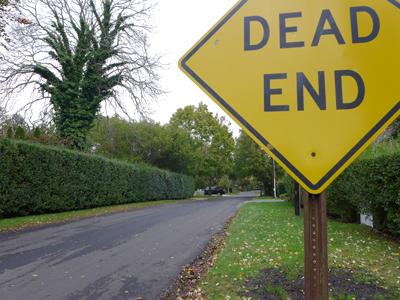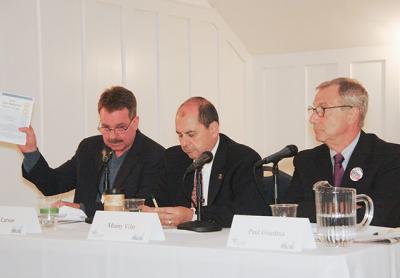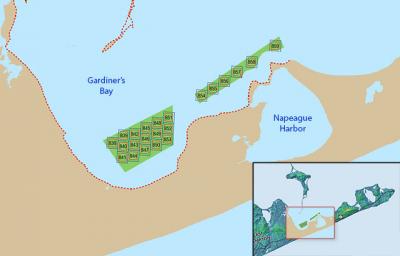The College Application Conundrum
The College Application Conundrum

“I call it the alphabet soup of college applications,” said Andi O’Hearn, the chief of student advancement at the Ross School in East Hampton, whose office is the last stop for seniors before they apply. Her reference was to the staggering number of options available to 12th graders today when it comes time to send in their applications.The first deadline some students will encounter is Wednesday’s early decision date, when thousands of students across the country will click the “submit” button for only their single most desired college or university. Answers come back in December. In the alphabet soup parlance that Ms. O’Hearn mentioned, early decision is known as ED I, and if the college says yes, the student is contractually obliged to attend.In addition to ED I, there is ED II — also binding, although with a slightly later deadline date, giving the student more time to shop around. Then there is early action, or EA, which has the same deadline as ED I but is nonbinding and does not require the student to accept or decline until around May 1. Next, there is restrictive early action, or EA II, which, according to Ms. O’Hearn, often appears only in the fine print at certain schools, and, although it is nonbinding, the applicant is not allowed to apply ED or EA to another school. Rolling decisions is another, whereby a school will consider applications as they arrive and notify students about three weeks later. Priority applications have an earlier deadline because of some unique consideration, such as an athletic or merit scholarship. Yet one more option: the plain old-fashioned regular decision, with a deadline usually around Jan. 1.And all this presented to students who have yet to make it out of high school.On the South Fork, approximately 140 of some 340 current seniors enrolled in the four nearest high schools — East Hampton, Pierson in Sag Harbor, Bridgehampton, and Ross — will apply in the early rounds, according to college admissions officials at those schools.Adam Fine, the principal at East Hampton High School, said the senior class was full of early deciders. Approximately 65 students of the 186 who will graduate next year have already applied in the early pool or will do so by Wednesday, said Karen Kuneth, the school’s counseling coordinator, who oversees five counselors who help high schoolers.Ms. Kuneth, who has worked in the school district for 17 years, said that while the number of early decision applications has remained consistent over the last few years, the number of early action applications (the nonbinding one) has risen exponentially. “EA really changed the landscape of applications,” she said. “Because it’s nonbinding, there’s really no downside for students who want to commit to certain schools but not all the way.” She said that last year’s class did “very well” by applying early.Ms. Kuneth is quick to caution, however, as does the Ross School’s Ms. O’Hearn, that students who could strengthen or complete their transcripts, or need extra time to improve their grades or test scores, should not apply during the early rounds.“ED and EA offer a false security,” explained Ms. O’Hearn, who has worked in admissions and college counseling since 1983. Approximately 50 percent of the 85 seniors at Ross will apply early, she said, adding, “I spend a lot of time talking kids out of applying early because it’s only an advantage if they are qualified candidates.” By that she means that their scores, grades, and overall portfolio will not threaten to hurt their selected college’s rankings.Indeed, college rankings often lie at the inner workings of the black box that is the college admissions process. The annually published U.S. News & World Report ranking has long incensed journalists and educators who claim that the list’s real purpose is to exacerbate status anxiety in prospective students and parents. Many learned voices have decried the existence of such lists, claiming that they have encouraged colleges and universities to game the system — to do what they can to raise their place in the rankings.Ms. O’Hearn said that she wants to believe the myriad options for college applications are there to offer students diverse choices and greater flexibility. But, ultimately, she conceded to another possibility: By aggressively increasing the size of their applicant pool, colleges can turn away a higher percentage of their applicants, thus appearing to be more selective and thereby raising the school’s ranking. After all, a college’s selectivity is the prime indicator of its desirability. Nonetheless, for the “earlies” there is some reassurance. An annual survey conducted by U.S. News in 2015 revealed that among the 245 ranked colleges and universities that participated in the study, the average acceptance rate for applicants who applied early decision or early action was about 63.1 percent, while the average for regular applicants was about 50.2 percent — a difference of 12.9 percentage points. For now, and over the next six weeks or so, college hopefuls and their parents will have no choice but to figure how to best navigate the complicated, anxiety-inducing experience of college admissions. Listening to advice from counselors is recommended. “We work hard to try and be sure the students understand the best strategies for them individually, and we work to support them,” Ms. O’Hearn said.






